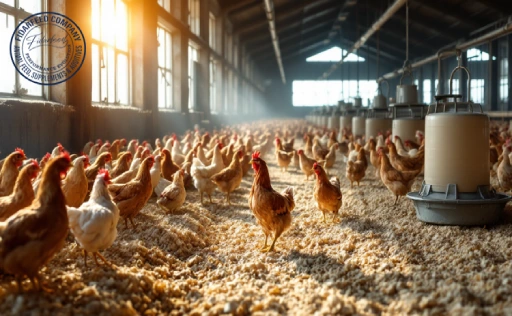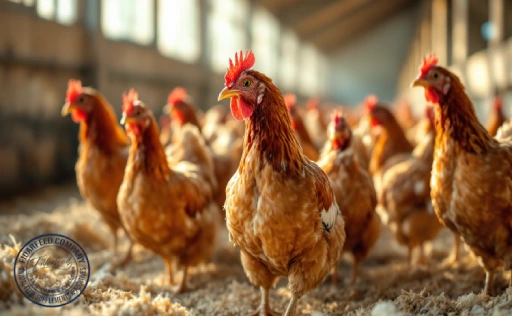
How to breed broiler chickens—this question sits at the heart of countless farms, both large and small, across the globe. Whether you’re a seasoned poultry producer or just dipping your toes into the broiler industry, understanding the essentials of breeding these fast-growing birds can make all the difference between success and disappointment. This guide is designed to walk you through the entire process in a practical, easy-to-follow way. From choosing the right breed to creating the ideal environment and feeding schedule, we’ll cover everything you need to know. Let’s dive in and unlock the secrets to a thriving broiler chicken operation.
What Does It Mean to Breed Broiler Chickens Successfully?
Breeding broiler chickens successfully goes far beyond just hatching chicks and feeding them. It’s about achieving consistent results—rapid weight gain, high survival rates, quality meat, and profitability—while maintaining ethical and sustainable practices. A successful breeder understands the importance of genetics, environment, nutrition, health management, and market timing.
Learn more about: Probiotic Supplement for Poultry
Success can look different depending on your goals. For a commercial operation, it might mean reaching market weight in under six weeks. For smallholders, it could involve balancing growth with feed cost and local demand. But in every case, success means healthy birds, efficient production, and a profitable return.
Getting Started: Choosing the Right Broiler Breed for Your Farm
The foundation of any broiler breeding program lies in selecting the right genetic stock. Popular commercial breeds like Ross 308, Cobb 500, and Arbor Acres are known for their fast growth, feed conversion efficiency, and strong immunity. However, these breeds thrive under intensive systems with controlled environments.
Learn more about: Cobb 500 Broiler Manual: Your Complete Guide to Profitable Poultry Farming
If you’re working in more rural or resource-limited settings, consider dual-purpose or slower-growing strains that are more resilient to variable conditions. Always source chicks from reputable hatcheries, and don’t hesitate to ask for parent stock details and performance records. The right breed sets the stage for everything that follows.

Preparing the Perfect Environment for Broiler Chickens
Your broiler house is their entire world. Creating a clean, well-ventilated, and predator-proof environment is critical. Use deep litter flooring with absorbent materials like wood shavings to manage moisture and ammonia. Avoid overcrowding—ideally, provide 0.6 to 0.75 square feet per bird in the early stages, gradually increasing space as they grow.
Learn more about: Mastering the Basics: A Comprehensive Broiler Breeder Management Guide
Temperature should be closely monitored, especially for chicks. Start at around 32–35°C (89.6–95°F) and gradually decrease to 21–24°C (69.8–75.2°F) by week four. A stress-free environment leads to healthier chickens, better feed efficiency, and higher meat yields.
Feeding Broiler Chickens for Maximum Growth and Health
Nutrition is a game-changer. Broilers need high-energy, protein-rich diets tailored to each growth phase. Starter feed (0–2 weeks) should contain around 22–24% protein. Grower feed (3–5 weeks) usually drops to 20%, and finisher feed (6 weeks onward) may reduce to 18–19%.
Learn more about: Ross 308 vs. Cobb 500: Which Broiler Breed is Right for You?
Feed formulation should include essential amino acids like lysine and methionine, as well as vitamins A, D, E, and minerals like calcium and phosphorus. Use automatic or well-monitored manual feeders to ensure consistent access. According to a 2021 study published in Poultry Science, feed conversion ratios (FCR) can dramatically improve with optimized feeding routines, reducing costs and enhancing profitability.

Broiler Chicken Health: Common Diseases and How to Prevent Them
Disease is one of the greatest threats to your flock. Common illnesses include Coccidiosis, Newcastle Disease, Infectious Bursal Disease (Gumboro), and respiratory infections like CRD (Chronic Respiratory Disease). Prevention is always better than cure.
Learn more about: Broiler Chicken Health at Risk? Know the Signs of Dysentery
Implement strict biosecurity: restrict visitor access, disinfect equipment regularly, and control rodents and insects. Follow a consistent vaccination schedule and consult with a local veterinarian to tailor your health program. Monitor your birds daily—early detection can save your flock.
Lighting, Temperature, and Ventilation: Managing Broiler Chicken Comfort
Broilers thrive in controlled environments. Lighting affects feeding behavior and rest cycles. A 23 hours light/1 hour dark schedule during the early stages encourages feeding and rapid growth. Gradually shift to longer dark periods to reduce stress and leg problems.
Ventilation is equally important. Fresh air helps control humidity, ammonia levels, and disease spread. Install adjustable sidewall or tunnel ventilation systems if possible. Remember, even the best feed won’t help if your birds are too hot or gasping for air.

Water Management Tips for Strong, Fast-Growing Broilers
Water is often overlooked, yet it’s essential. Broilers drink about 1.6–2 times the amount of feed they consume. Provide clean, cool water at all times. Dirty or warm water discourages intake and can lead to dehydration or digestive issues.
Learn more about: What Causes Sudden Death in Broilers: Key Factors and Solutions
Use nipple or bell drinkers for better hygiene, and clean the system regularly. During hot weather, increase water availability and consider adding electrolytes to support hydration and reduce heat stress.
Breeding Practices to Improve Growth Rate and Meat Quality
If you plan to breed your own broilers, select the fastest-growing and healthiest birds from each batch. Use traits like weight gain, feed intake, and body conformation to guide your choices. Avoid breeding from birds with leg deformities or poor health history.
Learn more about: Cobb 500: The Broiler Breeder’s First Choice – Unveiled
Crossbreeding between high-performing strains can enhance hybrid vigor, leading to better meat quality and growth rates. Document your results over time to fine-tune your selection process.

Record-Keeping and Monitoring: Tracking Your Broiler Breeding Progress
You can’t improve what you don’t measure. Keep detailed records of feed consumption, growth rates, mortality, vaccinations, and environmental conditions. Use spreadsheets, mobile apps, or even notebooks—whatever works for your scale.
Learn more about: Boost Your Poultry’s Growth with Sustainable, High-Quality Processed Meat Meal
Tracking helps identify trends, troubleshoot problems, and improve your cost-to-profit ratio. For instance, if mortality spikes in week three, you can revisit your brooding practices or feed changes. Good data equals better decisions.
Common Mistakes When Breeding Broiler Chickens (And How to Avoid Them)
Mistakes are part of learning, but some are costly. Overcrowding leads to stress and disease. Skipping vaccinations can result in mass losses. Inconsistent feeding reduces growth rates. Using poor-quality chicks sets you up for failure from day one.
Learn more about: Active Probiotic Yeast for Poultry
Avoid these pitfalls by planning ahead, maintaining hygiene, and investing in quality inputs. Always be open to learning—from both your own experiences and fellow breeders.

Harvesting and Marketing Your Broilers: From Farm to Table
Timing is everything. Broilers typically reach market weight (2–2.5 kg) in 6–7 weeks. Processing too early wastes feed investment, while waiting too long can reduce meat quality and increase fat deposits.
Learn more about: Boost Your Poultry’s Growth with Sustainable, High-Quality Processed Meat Meal
Plan your harvest based on market demand, bird weight, and cost analysis. Whether selling to wholesalers, live markets, or directly to consumers, emphasize quality and cleanliness. Packaging and branding can also boost your product’s appeal and price.
Final Thoughts: Growing a Profitable and Sustainable Broiler Breeding Business
Breeding broiler chickens is both a science and an art. It requires commitment, knowledge, and adaptability. From selecting the right breed to managing health, nutrition, and environment, each decision impacts your success.
Remember, the most profitable farms are not always the biggest—they’re the best managed. Whether you’re just starting or refining your operation, keep learning, stay consistent, and connect with your community of fellow breeders.
We’d love to hear from you! Share your experiences, ask questions, or drop your thoughts in the comments section below. Let’s grow better, together.



